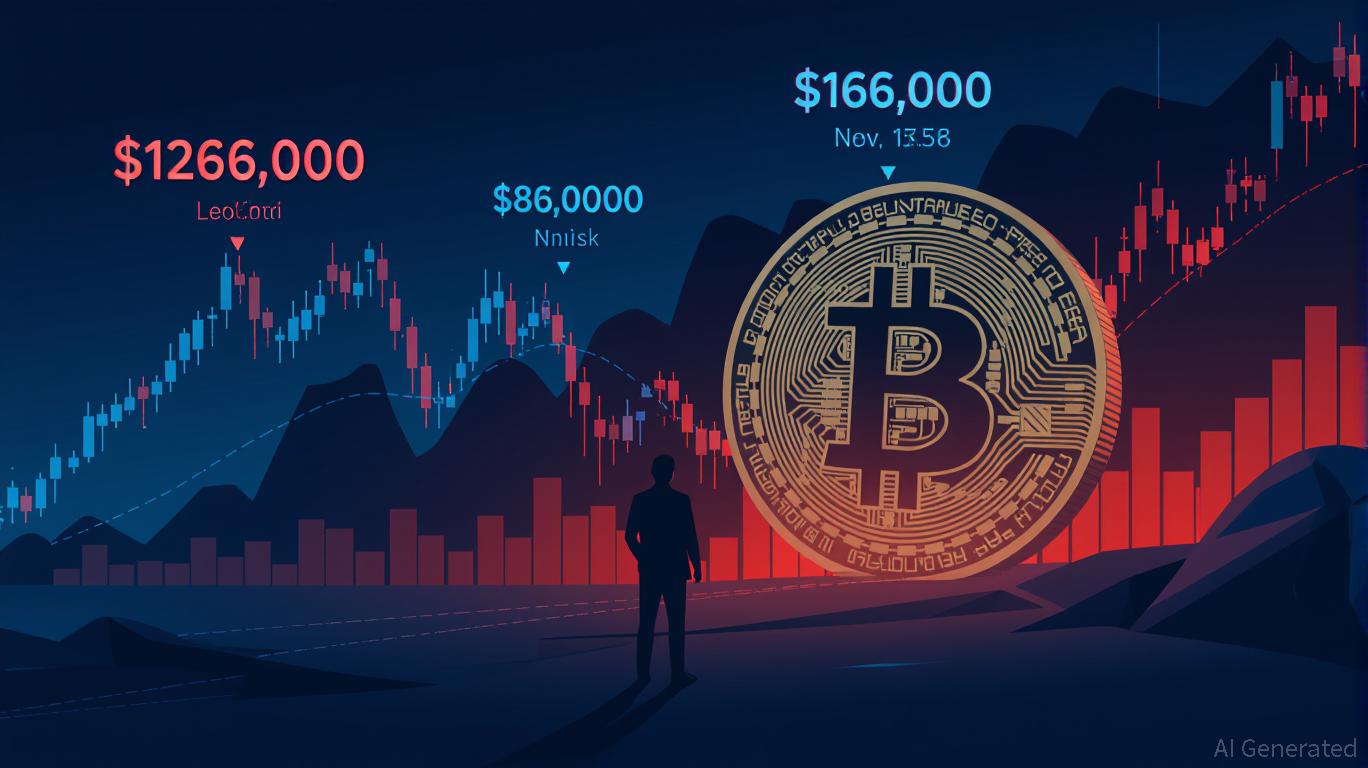Bitcoin’s Latest Downturn: Understanding Macro Risks and Changing Institutional Attitudes in 2025
- Bitcoin fell below $86,000 in Nov 2025 due to macroeconomic headwinds, institutional shifts, and regulatory changes. - The Fed's hawkish pivot increased leveraged crypto costs, triggering de-risking and cash flows. - Leverage-driven liquidations and regulatory shocks exacerbated Bitcoin's volatility and selloffs. - Regulatory tightening and Japan's Nomura entry highlight evolving compliance and institutional adoption. - Institutional demand and regulatory clarity will determine Bitcoin's recovery potenti
Macroeconomic Headwinds: Fed Policy and Risk Reduction
The Federal Reserve’s ongoing rate hikes have been a major factor behind Bitcoin’s recent struggles. Experts point out that the Fed’s more aggressive stance has ended the era of easy money, which had previously supported riskier assets such as
Adding to these worries is the increasing concern over global economic imbalances.

Institutional Leverage and Cascade Liquidations
Leverage among institutional investors has heightened Bitcoin’s price swings, turning small drops into larger sell-offs. Data from Investing.com shows that
The impact of these liquidations was worsened by unexpected regulatory developments. For example,
Tighter Regulations and Compliance Hurdles
New regulatory measures in the U.S. have introduced fresh challenges.
At the same time,
Institutional Sentiment: At a Crossroads?
Major investors’ attitudes toward Bitcoin are in flux. While Nomura’s move into the sector signals some optimism, it also shows a shift in risk assessment.
The relationship between institutional demand and regulatory transparency will be crucial. Should regulators worldwide continue to clarify rules—especially in key markets like Japan and the U.S.—Bitcoin may regain its status as a reliable store of value. On the other hand, more regulatory tightening or unexpected policy moves could extend the current bearish phase.
Looking Ahead: Proceeding with Caution
Bitcoin’s near-term prospects remain uncertain.
Investors are encouraged to use defensive tactics,
Disclaimer: The content of this article solely reflects the author's opinion and does not represent the platform in any capacity. This article is not intended to serve as a reference for making investment decisions.
You may also like
Bitcoin News Today: Xapo's Enhanced Bitcoin Fund Signals Growing Institutional Confidence in Digital Assets
- Xapo Bank expanded its Byzantine BTC Credit Fund after $100M in institutional allocations, reflecting growing demand for Bitcoin-backed yield products. - The fund uses Hilbert Group's institutional-grade lending process to generate low-risk returns for Bitcoin holders through collateralized loans. - Xapo's expansion follows 2022 lending sector collapse, leveraging regulatory compliance in Gibraltar/Cayman to rebuild institutional trust in Bitcoin collateral. - The product differentiates from ETFs/stablec

Bitcoin News Update: Movements of Investors' USDT Indicate Bitcoin Highs and Periods of Profit Realization
- Bitcoin's price inversely correlates with USDT outflows, as investors shift liquidity between assets during market cycles. - S&P Global downgraded USDT's stability rating to "weak" due to 5.6% Bitcoin allocation and opaque reserves amid U.S. regulatory reforms. - The GENIUS Act and EU's MiCA framework are reshaping stablecoin markets, forcing Tether and Circle to launch jurisdiction-specific, cash-backed alternatives. - Institutional ETF activity, including Texas's Bitcoin purchases and fragmented inflow

The New Prospects for Economic Growth Infrastructure in Webster, NY
- Webster , NY, leverages $9.8M FAST NY grants and PPPs to transform Xerox campus into a high-tech industrial hub. - Infrastructure upgrades including roads, sewers, and electrical systems aim to attract advanced manufacturing and renewable energy firms. - Governor Hochul's strategy drives $51M in upstate investments, creating 250+ jobs via projects like the $650M fairlife® dairy plant. - Redevelopment boosts industrial land availability and residential property values by 10.1%, with mixed-use zoning enhan

The Impact of Artificial Intelligence on Contemporary Portfolio Management: Potential Benefits and Challenges
- AI redefines portfolio management with real-time analytics and dynamic asset allocation, shifting from static human-driven strategies to data-centric systems. - Generative AI tools like ChatGPT automate financial workflows, enabling hyper-personalized strategies and boosting business outcomes through optimized digital presence. - Risk modeling evolves via AI's pattern detection, but challenges persist in transparency and bias, requiring explainable AI frameworks and human oversight. - Institutions integr
